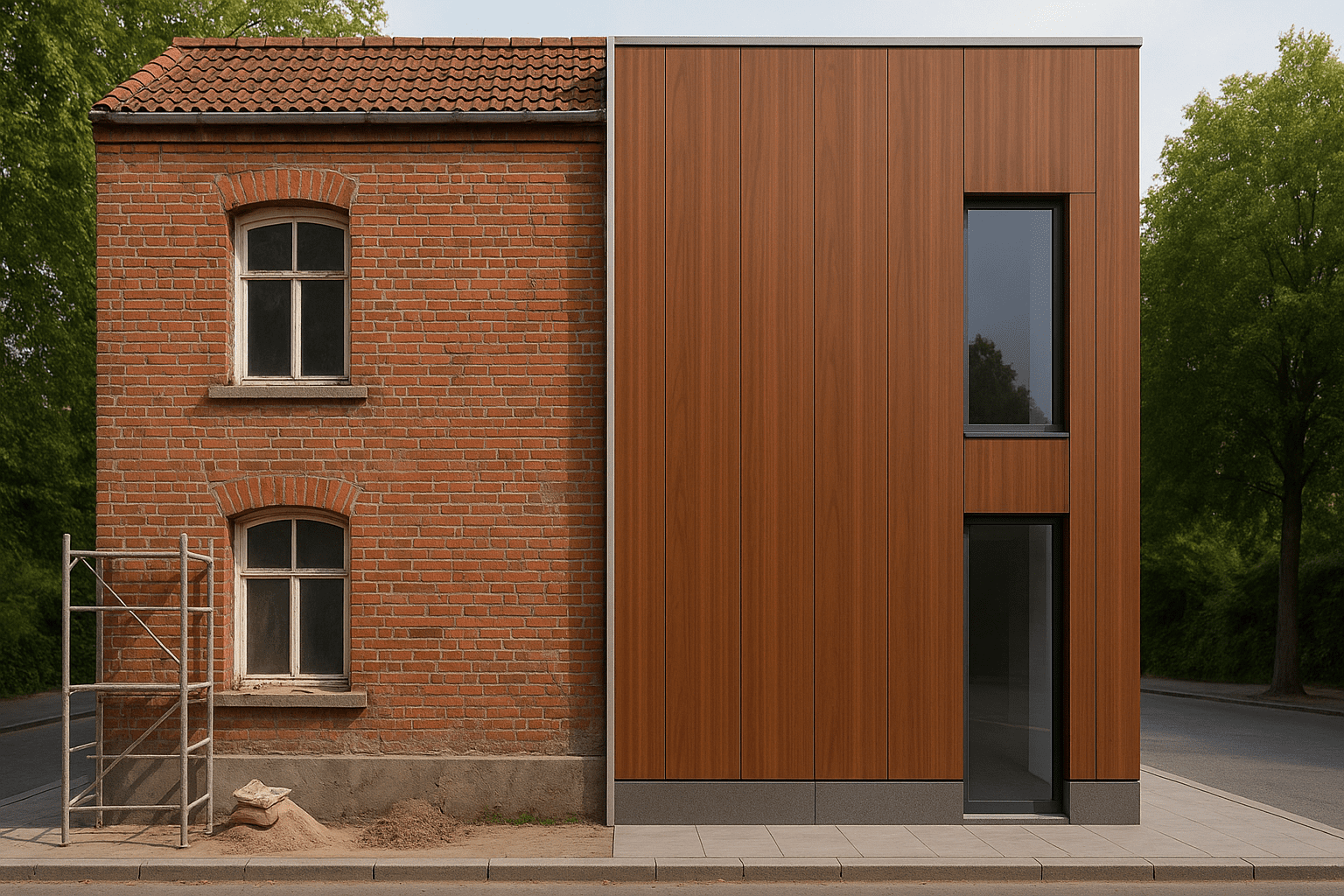Introduction: A New Era in Exterior Construction
Gone are the days when brick, cement, or stone were the only contenders for your building’s outer shell. Today, materials compete on more than just strength — they’re judged by looks, maintenance, sustainability, and installation speed. In this arena, HPL cladding from Samrat is rapidly redefining what modern builders expect.
Let’s stack HPL up against traditional materials to see who comes out on top.
Strength and Durability
Traditional Materials:
- Stone and brick offer great compressive strength.
- But they’re prone to cracking with temperature shifts or seismic activity.
HPL Cladding:
- Withstands UV, rain, wind, and impact with ease.
- No warping, chipping, or color fading for decades.
For India’s unpredictable climate, HPL proves more reliable long-term.
Aesthetics and Design Flexibility
Traditional Materials:
- Limited colors and finishes.
- Time-intensive customization.
HPL Cladding:
- Available in 300+ finishes: stone, wood, metallic, and abstract.
- Can be cut, bent, and applied creatively without compromising structure.
Your building doesn’t need to look like every other structure on the block.
Installation and Time Efficiency
Traditional Materials:
- Heavy logistics.
- Long curing times.
- Labor-intensive.
HPL Cladding:
- Lightweight and modular.
- Dry installation (no curing time).
- Saves weeks of construction time.
Speed builds profit — and HPL delivers.
Maintenance and Lifecycle Costs
Traditional Materials:
- Require regular painting, sealing, or replacement.
- Vulnerable to moss, cracks, and fading.
HPL Cladding:
- Graffiti-resistant.
- Easy to clean.
- No repainting required.
Lower long-term costs mean better ROI for homeowners and developers alike.
Eco-Friendliness and Certifications
Traditional Materials:
- Often high in embodied carbon.
- Less transparency in sourcing.
HPL Cladding:
- Certified low-emission.
- Recyclable and sustainable.
- Supports green building credits (like IGBC, LEED).
It’s the modern choice for a planet-first construction industry.



